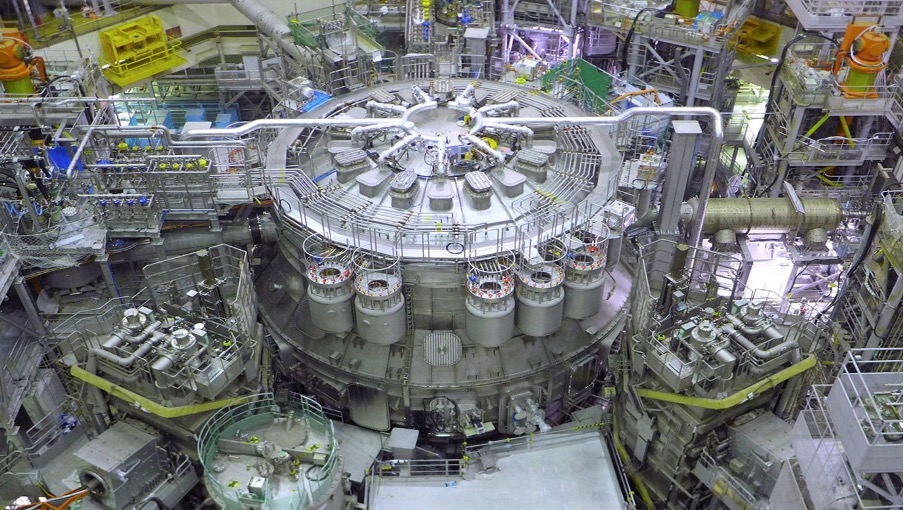Bringing science fiction down to Earth this month, Tim Benson, Chair of Powerful Thinking, updates us on developments in fusion energy science and how it can play a part in meeting our world’s ever increasing energy requirements, using materials that are carbon-free and that produce highly concentrated energy. Read the full blog:
Any Trekies out there? In particular fans of Discovery? Do you recall the episode where, in order to trap the Red Angel, the crew used the abundant deuterium on Essof IV to create a plasma reactor equivalent to the energy of 12 warp cores? No, I thought not, but why do I ask? Well, fusion energy science could begin to play a part in meeting our world’s ever increasing energy requirements as soon as the 2050s, using materials that are carbon-free and that produce levels of highly concentrated energy.
Fusion energy science is the exploration of how to extract energy from a controlled thermonuclear fusion reaction. In its naturally occurring form, it is essentially the same process that powers our sun and stars through hydrogen fusion. Atoms of Tritium and Deuterium (isotopes of hydrogen, Hydrogen-3 and Hydrogen-2, respectively) unite under extreme pressure and temperature to produce a neutron and a helium isotope. Along with this, an enormous amount of energy is released.
The foundation of nuclear energy is harnessing the power of atoms. Both fission and fusion are nuclear processes by which atoms are altered to create energy, but they differ quite substantially? Simply put, fission is the division of one atom into two, and fusion is the combination of two lighter atoms into a larger one. Nuclear fission takes place when an unstable isotope, typically Uranium-235, is bombarded by neutrons, splitting its nucleus and breaking it down into fission products – three high speed neutrons and a bucket full of energy. Fusion, on the other hand, takes place when two low-mass isotopes, typically isotopes of hydrogen, unite under conditions of extreme pressure and temperature. Fusion is clearly the more sustainable of the two processes, as it generates zero greenhouse gases at point of use, it produces less long-lived radioactive waste and, in the form of hydrogen, has a nearly unlimited fuel supply. Its energy yield is also greater than its fission counterpart, with the Department of Energy (DOE) citing one pick-up truck full of fusion fuel as being equivalent to the energy release of 10 million barrels of oil or 2 million metric tons of coal.

That said, handling plasma, which is defined as the fourth state of matter (a gas in which a sufficient amount of energy is present to enable ions and electrons to coexist), is problematic and costly process, because it needs to take place in a controlled and magnetised environment. However, research towards practical fusion energy generation recently reached a milestone when Japan’s JT-60SA fusion reactor came online. Its superconducting coils create magnetic fields to contain a super-hot cloud of ionized gas (plasma) within a tokamak, a doughnut shaped vacuum vessel, where the hydrogen nuclei fuse and energy is released. However, this four-story high fusion chamber, which super heats plasma to 200 million degrees Celsius for circa 100 seconds, currently consumes more energy than it produces. The International Thermonuclear Experimental Reactor (ITER), currently under construction in France, will be twice the height and capable of holding 83% more plasma. Lessons learned from the JT-60SA will be applied to ITER, when it comes online in December 2025, with a view to studying plasma stability and how this can increase energy yield.
At present, plasma physics remains largely experimental and theoretical, at least when it comes to generating energy on Earth. Experts believe that, with another 10 or so years R&D into plasma wall and tokamak technologies, plasma fusion could become a viable source of concentrated, clean energy, and one more reliable than its renewable counterparts, as neither location nor weather conditions will have a bearing on energy generation.
This guest blog originally appeared in the November 2023 Vision: 2025 newsletter. Sign up to receive monthly event sustainability news, case studies and guest blogs direct to your inbox www.vision2025.org.uk

